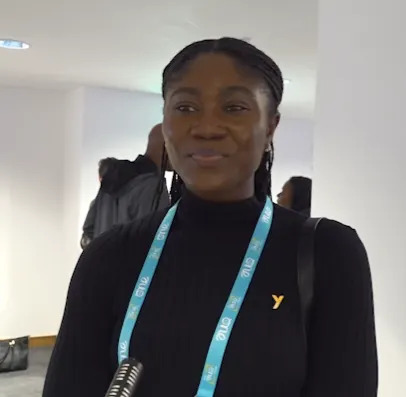And then there were 6 — kinds of taste, that is
In addition to sweet, salty, sour, bitter and umami, a new study suggests the tongue might also detect ammonium chloride as a basic taste
IMAGE: THE POPULAR SCANDINAVIAN CANDY SALTY LICORICE CONTAINS THE ALKALINE SALT AMMONIUM CHLORIDE, GIVING THE CANDY A UNIQUE FLAVOR. view more
CREDIT: MAXINE ESCHGER.
Japanese scientist Kikunae Ikeda first proposed umami as a basic taste — in addition to sweet, sour, salty and bitter — in the early 1900s. About eight decades later, the scientific community officially agreed with him.
Now, scientists led by researchers at the USC Dornsife College of Letters, Arts and Sciences have evidence of a sixth basic taste.
In research published Oct. 10 in Nature Communications, USC Dornsife neuroscientist Emily Liman and her team found that the tongue responds to ammonium chloride through the same protein receptor that signals sour taste.
“If you live in a Scandinavian country, you will be familiar with and may like this taste,” says Liman, professor of biological sciences. In some northern European countries, salt licorice has been a popular candy at least since the early 20th century. The treat counts among its ingredients salmiak salt, or ammonium chloride.
Scientists have for decades recognized that the tongue responds strongly to ammonium chloride. However, despite extensive research, the specific tongue receptors that react to it remained elusive.
Liman and the research team thought they might have an answer.
In recent years, they uncovered the protein responsible for detecting sour taste. That protein, called OTOP1, sits within cell membranes and forms a channel for hydrogen ions moving into the cell.
Hydrogen ions are the key component of acids, and as foodies everywhere know, the tongue senses acid as sour. That’s why lemonade (rich in citric and ascorbic acids), vinegar (acetic acid) and other acidic foods impart a zing of tartness when they hit the tongue. Hydrogen ions from these acidic substances move into taste receptor cells through the OTOP1 channel.
Because ammonium chloride can affect the concentration of acid — that is, hydrogen ions — within a cell, the team wondered if it could somehow trigger OTOP1.
To answer this question, they introduced the Otop1 gene into lab-grown human cells so the cells produce the OTOP1 receptor protein. They then exposed the cells to acid or to ammonium chloride and measured the responses.
“We saw that ammonium chloride is a really strong activator of the OTOP1 channel,” Liman said. “It activates as well or better than acids.”
Ammonium chloride gives off small amounts of ammonia, which moves inside the cell and raises the pH, making it more alkaline, which means fewer hydrogen ions.
“This pH difference drives a proton influx through the OTOP1 channel,” explained Ziyu Liang, a PhD student in Liman’s lab and first author on the study.
To confirm that their result was more than a laboratory artifact, they turned to a technique that measures electrical conductivity, simulating how nerves conduct a signal. Using taste bud cells from normal mice and from mice the lab previously genetically engineered to not produce OTOP1, they measured how well the taste cells generated electrical responses called action potentials when ammonium chloride is introduced.
Taste bud cells from wildtype mice showed a sharp increase in action potentials after ammonium chloride was added while taste bud cells from the mice lacking OTOP1 failed to respond to the salt. This confirmed their hypothesis that OTOP1 responds to the salt, generating an electrical signal in taste bud cells.
The same was true when another member of the research team, Courtney Wilson, recorded signals from the nerves that innervate the taste cells. She saw the nerves respond to addition of ammonium chloride in normal mice but not in mice lacking OTOP1.
Then the team went one step further and examined how mice react when given a choice to drink either plain water or water laced with ammonium chloride. For these experiments, they disabled the bitter cells that also contribute to the taste of ammonium chloride. Mice with a functional OTOP1 protein found the taste of ammonium chloride unappealing and did not drink the solution, while mice lacking the OTOP1 protein did not mind the alkaline salt, even at very high concentrations.
“This was really the clincher,” Liman said. “It shows that the OTOP1 channel is essential for the behavioral response to ammonium.”
But the scientists weren’t done. They wondered if other animals would also be sensitive to and use their OTOP1 channels to detect ammonium. They found that the OTOP1 channel in some species seems to be more sensitive to ammonium chloride than in other species. And human OTOP1 channels were also sensitive to ammonium chloride.
So, what is the advantage in tasting ammonium chloride and why is it evolutionarily so conserved?
Liman speculates that the ability to taste ammonium chloride might have evolved to help organisms avoid eating harmful biological substances that have high concentrations of ammonium.
“Ammonium is found in waste products — think of fertilizer — and is somewhat toxic,” she explained, “so it makes sense we evolved taste mechanisms to detect it. Chicken OTOP1 is much more sensitive to ammonium than zebra fish.” Liman speculates that these variations may reflect differences in the ecological niches of different animals. “Fish may simply not encounter much ammonium in the water, while chicken coops are filled with ammonium that needs to be avoided and not eaten.”
But she cautions that this is very early research and further study is needed to understand species differences in sensitivity to ammonium and what makes OTOP1 channels from some species sensitive and some less sensitive to ammonium.
Towards this end, they have made a start. “We identified a particular part of the OTOP1 channel — a specific amino acid — that’s necessary for it to respond to ammonium,” Liman said. “If we mutate this one residue, the channel is not nearly as sensitive to ammonium, but it still responds to acid.”
Moreover, because this one amino acid is conserved across different species, there must have been selective pressure to maintain it, she says. In other words, the OTOP1 channel’s ability to respond to ammonium must have been important to the animals’ survival.
In the future, the researchers plan to extend these studies to understand whether sensitivity to ammonium is conserved among other members of the OTOP proton family, which are expressed in other parts of the body, including in the digestive tract.
And who knows? Perhaps ammonium chloride will join the other five basic tastes to bring the official count to six.
About the study
In addition to Liman, Liang and Wilson, authors on the study include Sue Kinnamon of the University of Colorado Medical School and Bochuan Teng, a former PhD student at USC Dornsife who is now at Cal Tech.
The study was supported by National Institutes of Health grants R01GM131234 and R01DC013741.
JOURNAL
Nature Communications
METHOD OF RESEARCH
Experimental study
SUBJECT OF RESEARCH
Animal tissue samples
ARTICLE TITLE
The Proton Channel OTOP1 is a Sensor for the Taste of Ammonium Chloride
ARTICLE PUBLICATION DATE
5-Oct-2023










